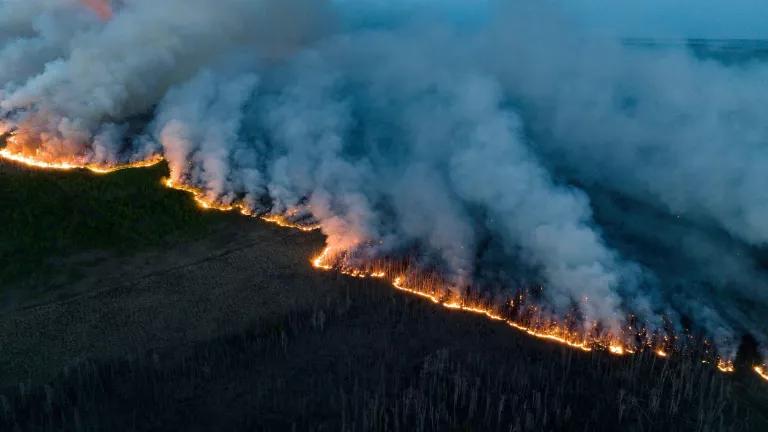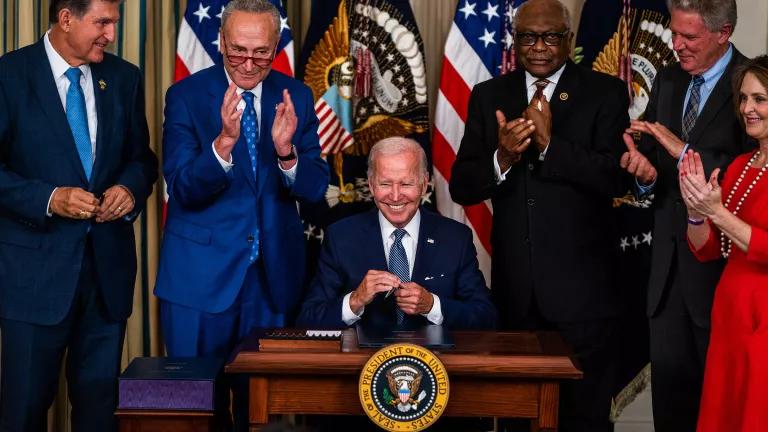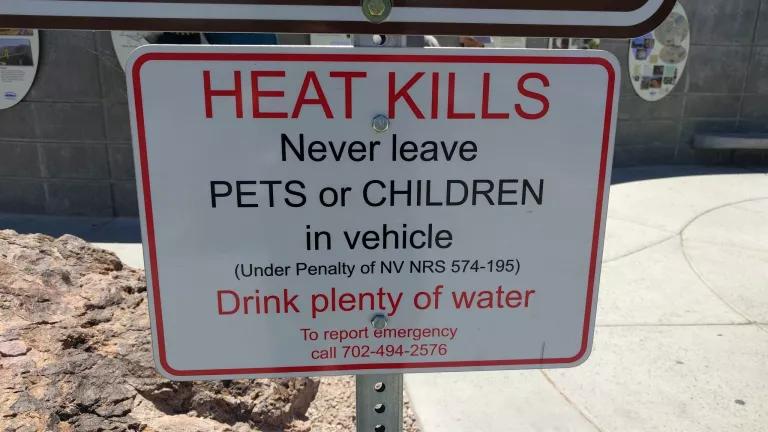Is Your State Ready for the Health Harms of Climate Change?
Most states aren't sufficiently ready for the health harms of climate change. But there is a path forward.

Relative preparedness of each state for the public health consequences of the climate crisis. Dark green represents least prepared; light green represents most prepared.
Most states aren’t sufficiently ready to protect their residents’ health from climate change, according to a new analysis from Johns Hopkins Bloomberg School of Public Health (JHSPH) and Trust for America’s Health (TFAH). Although every state has thought at least a little about climate-related health threats, states and regions differ widely in their overall level of public health preparedness. And unfortunately, some of the states most environmentally and socioeconomically vulnerable to climate-related health harms are the least prepared to handle them.
This ambitious report provides two things others haven’t:
- A snapshot of climate and health vulnerabilities and preparedness in all 50 states and the District of Columbia; and
- A view of preparedness for the health consequences of climate change that integrates both climate-specific activities and the basic public health infrastructure foundational to addressing any existing, new, or evolving threat.
The new findings from TFAH and JHSPH should be an important wake-up call for state and federal leaders—in no small part because they come on the heels of the 2020 Lancet Countdown, which found that climate change is inflicting an ever larger toll on our health.
Importantly, in this new report, each state’s vulnerability and preparedness scores are relative to other states. In other words, the people living in states least vulnerable to climate-related health threats are still susceptible to the climate crisis, and the states most prepared to deal with those threats still have work to do.
In fact, the authors note that:
“No state achieved the highest level of preparedness across all subdomains.”
For example, the five most prepared states—Utah, Maryland, Vermont, Virginia, and Colorado—only scored from 6.5 (Colorado) to 7.4 (Utah) out of a possible total of 10. And there’s a mismatch between vulnerability and preparedness, with just Arizona and North Carolina ranking most vulnerable and most prepared.
What areas of preparedness need the most work?
The areas of general public health preparedness identified in the report as most in need of improvement across all states probably won’t surprise you, given the challenges we’ve seen during the COVID-19 pandemic.
They are:
- Social capital and cohesion, meaning how connected residents are to one another and to local organizations and governments. This element is critical to emergency response, which typically starts with local communities or tribes, and to long-term recovery from disasters. Average state score: 4.4 out of 10.
- Prehospital care provided by emergency medical services. Average state score: 4 out of 10.
- Mental and behavioral healthcare, including access to social service networks and substance abuse treatment. Average state score: 3.8 out of 10.

A local volunteer assisting with the response to Hurricane Maria. Volunteerism is one measure of social cohesion.
The researchers assessed basic climate and health adaptation planning in each state with a series of yes or no questions. They didn't attempt to rank the quality or depth of planning efforts, or evaluate plan implementation. Even that high-level analysis, however, revealed another unsurprising, but unfortunate, finding:
“Some [states] have invested real time and resources for years, including by establishing dedicated teams that continuously work to hone a detailed understanding of their state’s climate-related threats and evidence-based interventions. Others, including some with higher vulnerabilities and risks, seem to have barely begun.”
Given how alarming the recent rate of climate change has been, we need more progress at the state level—and fast.

Wildfire smoke in San Francisco, September 2020.
How do we improve state readiness for climate and health hazards?
NRDC supports the federal and state recommendations offered in the report, which broadly fall into five main categories:
- Creating a mandate for climate and health preparedness. This includes federal legislation directing Health and Human Services to develop a national climate and health strategy.
- Investing in necessary research, training, and public health infrastructure. This includes funding the U.S. Centers for Disease Control and Prevention’s Climate and Health Program and climate adaptation in state health agencies.
- Addressing racial and other health inequities that are the root of many climate vulnerabilities. This includes modernizing efforts to identify high-risk populations and supporting policies and programs that address social determinants of health.
- Ensuring community members have a leading role in planning. The people who face the greatest risk need to be at the table.
- Moving beyond planning to implementation and evaluation.
You can learn more here about your state’s level of preparedness, along with specific areas of improvement your members of Congress and state officials should make right away.



